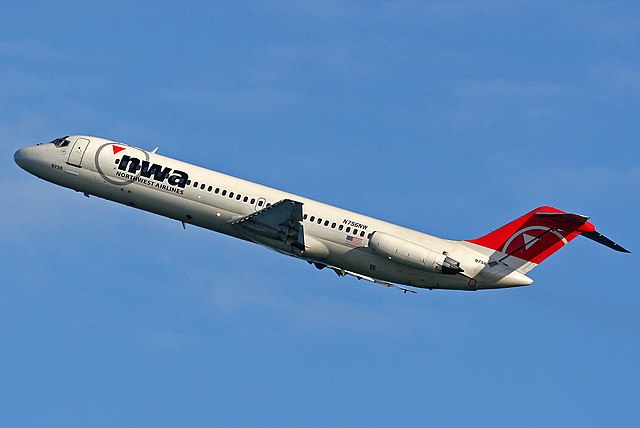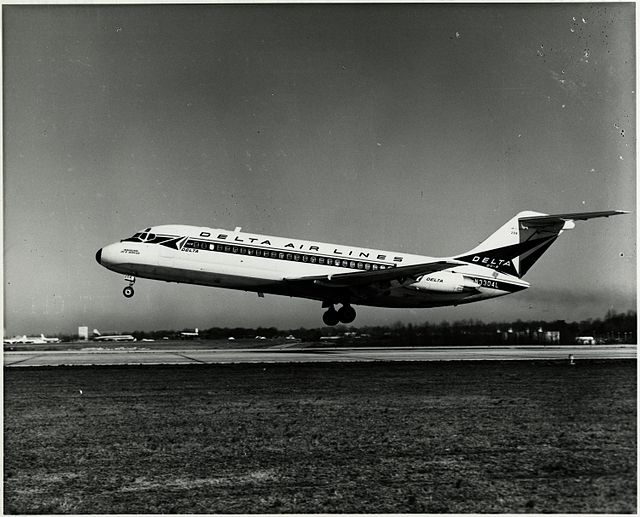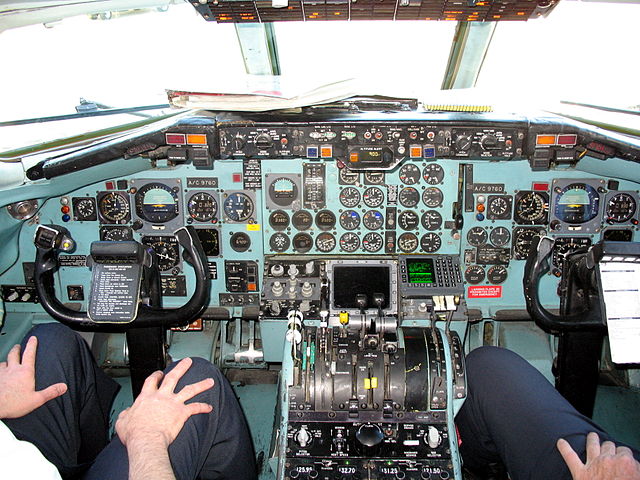The McDonnell Douglas DC-9 is an American five-abreast, single-aisle aircraft designed by the Douglas Aircraft Company. It was initially produced as the Douglas DC-9 prior to August 1967, after which point the company had merged with McDonnell Aircraft to become McDonnell Douglas.
Following the introduction of its first jetliner, the high-capacity DC-8, in 1959, Douglas was interested in producing an aircraft suited to smaller routes. As early as 1958, design studies were conducted; approval for the DC-9, a smaller all-new jetliner, came on April 8, 1963. The DC-9-10 first flew on February 25, 1965, and gained its type certificate on November 23, to enter service with Delta Air Lines on December 8.
McDonnell Douglas DC-9
The DC-9 entered service with Delta Air Lines on December 8, 1965.
A DC-9's two-person cockpit with analog instrument panel
The cabin of a former Northwest Airlines DC-9, showing a typical four-abreast seating in First Class and Five-abreast seating in economy class behind.
A narrow-body aircraft or single-aisle aircraft is an airliner arranged along a single aisle, permitting up to 6-abreast seating in a cabin less than 4 metres (13 ft) in width.
In contrast, a wide-body aircraft is a larger airliner usually configured with multiple aisles and a fuselage diameter of more than 5 metres (16 ft), allowing at least seven-abreast seating and often more travel classes.
Four-abreast cross-section
Narrow-body Boeing 737-300 in front of a Boeing 777-300ER wide-body
Airbus A320 (foreground) and Boeing 737-900 (background), both narrow-bodies
Two-abreast Beech 1900








